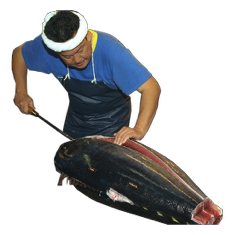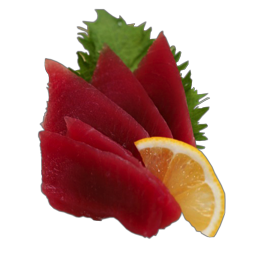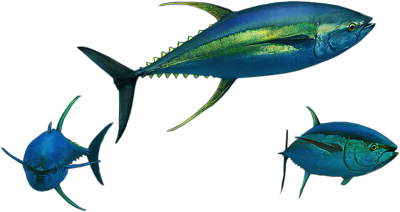YELLOWFIN TUNA
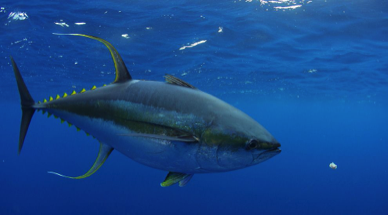
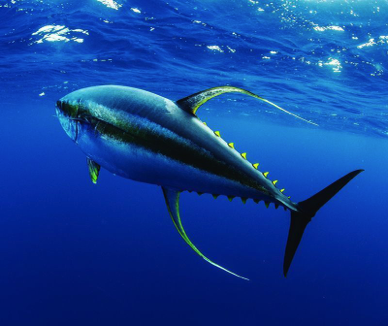
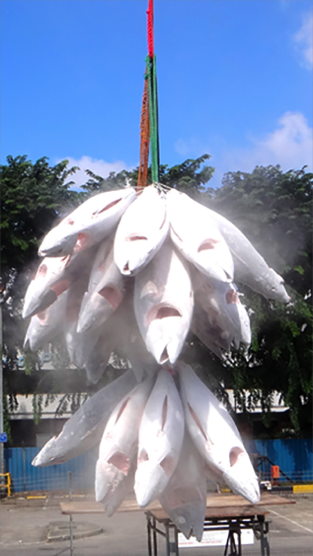
YELLOWFIN TUNA (Thunnus albacares)
Scientific Name: Thunnus albacares
Market Name: Tuna
Common Name: Yellowfin tuna, Indian yellowfin, “Oil yellowfin” tuna
Japanese Name: Kihada
Description
The yellowfin tuna is one of the largest tuna species, reaching weights of over 136 kg, but is significantly smaller than the Bigeye tuna and the Southern Bluefin Tuna.
The second dorsal fin and the anal fin, as well as the finlets between those fins and the tail, are bright yellow, giving this fish its common name. The second dorsal and anal fins can be very long in mature
specimens, reaching almost as far back as the tail and giving the appearance of sickles or scimitars. The main body is very dark metallic blue, changing to silver on the belly, which has about 20 vertical lines.
Yellowfin, as its name implies, is distinguished from other tunas by a long, bright-yellow dorsal fin and a yellow strip down its side. It’s also more slender than bluefin. Yellowfin is the most tropical species of tuna, abundant in warm waters throughout the Indian. Pacific and Atlantic, often mixed with other species, especially skipjack tuna. The fish is most often harvested by purse seine, but the best-quality yellowfin is caught by hook and line.
Habitat
Yellowfin tuna inhabit the mixed surface layer of the ocean above the thermocline. Sonic tracking has found that although yellowfin tuna, mostly range in the top 100 meters of the water column and penetrate the thermocline relatively infrequently, they are capable of diving to considerable depths. They are normally a schooling fish and stay in their immediate school. Yellowfin tuna often travel in schools with similarly sized companions. They sometimes school with other tuna species and mixed schools of small yellowfin and skipjack tuna in particular, are commonplace.
Diet and Predation
Yellowfin tuna prey include other fish, pelagic crustaceans, and squid. Like all tunas their body shape is evolved for speed, enabling them to pursue and capture fast-moving baitfish such as flying fish, and mackerel. Schooling species such as anchovies and sardines are frequently taken. Large yellowfin prey on smaller members of the tuna family such as frigate mackerel and skipjack tuna.
In turn, yellowfin are preyed upon when young by other pelagic hunters, including larger tuna, seabirds and predatory fishes such as shark and billfish. As they increase in size and speed, yellowfin become able to escape most of their predators. Adults are threatened only by the largest and fastest hunters, such as toothed whales, pelagic sharks such as the mako and great white, and large blue marlin and black marlin The main source of mortality, however, is industrial tuna fisheries.
Product Profile - Eating
Yellowfin tuna has a mild, meaty flavour. It’s more flavourful than albacore, but leaner than bluefin. The meat is bright red in its raw state but, and is served raw as sashimi and in sushi. Fat is desirable, as more fat means more flavour.
Nutrition Facts:
Calories: 108
Fat Calories: 8.1
Total Fat: 0.9 g
Saturated Fat: 0.2 g
Cholesterol: 45 mg
Sodium: 37 mg
Protein: 23.4 g
Omega 3: 0.2 g
PELAMIS YELLOWFIN TUNA FRESH FROM THE SEA - SNAP FROZEN (-60'C) TO KNIFE TO TABLE
